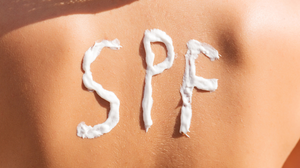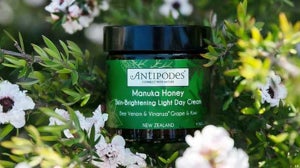
Question Time
What exactly is a menstrual cup?
A menstrual cup is a Feminine Hygiene device, its purpose is to collect menstrual fluid and prevent it leaking onto clothes. Organicup is made from 100% soft, medical-grade silicone from the USA. Organicup is registered with the Vegan Society, meaning it’s cruelty free and also the only cup brand in the world AllergyCertified.
Will it leak?
If correctly inserted, the Organicup will not leak. Scroll down for directions on correct insertion. OrganiCup works really well for women with heavy periods or menorrhagia, since it can contain 3 times more than a XL tampon.
In the beginning while you’re getting to know your cup and flow, we recommend you empty the cup more frequently to see how quickly it fills up. If you have a heavier flow, you might have to empty your cup more often than twice a day.
Are they difficult to use?
If the menstrual cup is completely new to you it will take time to get used to the process. Organicup has an excellent video with a step by step instruction guide to help you get familiar with how to use your Organicup.
Does one size fit all?
Organicup recognises that we are all unique, so ‘one size fits all’ is not an option. Which is why they offer 3 sizes with a fitting guide for each.
Size Mini: For teens or those who need a smaller size
Size A: For those who have not given birth vaginally
Size B: For those who have given birth vaginally
The difference between size A and B is very small (size A is 0.4 cm smaller than size B) but still it is very important to use the proper size to prevent leakage.
Are they expensive?
Nope, the Organicup is available from £21, which may be slightly more than you pay for your monthly supply of feminine hygiene products, however, the menstrual cup lasts for years not just a few hours, unlike disposable tampons and pads. That amounts to a vast saving over time.
Is it hygienic?
Absolutely, you first sterilize your menstrual cup in boiling water, instructions are detailed in the video guide. Once inserted correctly you create an internal vacuum, this stops any menstrual blood coming into contact with the air, which means no odors, it’s ultra hygienic and anti-bacterial.
To compare, around 1/4 of fluids collected by tampons are natural and necessary secretions, Organicup only collects, thus eliminating irritation and dryness while ensuring the natural pH balance is kept intact.
Will it get lost or stuck?
First of all, the cup can’t disappear inside you, but it can move up slightly.
The menstrual cup can’t get lost in the vagina; it will ultimately slip down by force of gravity.
If you have problems reaching the cup, the first thing to do is relax and breathe. If the menstrual cup has worked its way higher inside the vagina, it’s important to relax the muscles as tensing up will only make removing it more difficult.
Try squatting or putting one leg up on the toilet so you have better reach. Pull down gently on the stem until you can reach the bottom of the cup and grasp it with your fingers and pinch it to release the suction, and gently ease it out.
Can you pee whilst using a menstrual cup?
Yes you can!
The menstrual cup doesn’t collect your urine. The cup is inserted into the vagina and your urine comes from the urethra so the two do not interfere and you don’t have to remove the cup when you pee.
Unlike tampons, which have a string that can end up soaking up unwanted fluids, you can go to the bathroom without a worry.
How long do they last?
The menstrual cup is reusable for years. After a while of usage, the cup might get slightly stained or discolored – and that’s completely fine. Even if you replace your cup every third year, you’ll be spending way less money than you would on disposable period products and you’ll save the environment for a great deal of waste!
Why Switch from my current product?
There are so many reasons to switch, be it cost effectiveness, environmental friendly consciousness or for personal comfort and hygiene.
You will be doing the environment a massive favour, did you know that 4.6 million disposable period products are flushed down the toilet every day in the UK alone! It can also take up to 500 years for tampons and pads to degrade.
Tampons, pads and panty liners along with their packaging and individual wrapping generate more than 200,000 tonnes of waste per year, and typically all contain plastic. This waste mostly ends up in landfills, sewages, on our beaches and in our oceans.
While the actual products contribute largely to the environmental issue, their life-cycle is just as damaging – from the raw material extraction, which typically involves the production of cotton and the use of pesticides and insecticides, to the fact that most pads contain polyethylene plastic (the adhesive that’s used to make the pad stick to your underwear) and most tampons also contain chemicals such as dioxin, chlorine and rayon. While the products sit in landfills, these chemicals get soaked up by the earth and are released as pollution into the groundwater and air.
Organicup is 100% Medical grade Silicone, which is derived from quartz, a type of sand, which is the second most abundant mineral in the Earth’s crust and not hazardous to the environment. Additionally, the OrganiCup is not colored, avoiding any additives.
In terms of savings, as an example, a 26 year old woman who uses pads could save roughly £1,037 and 51lbs of waste from switching now up until menopause. If using tampons you could save roughly £686 but an enormous 95lbs of waste if they switch now up to menopause.
Top Tips for beginners
Tip 1: Wear a panty liner
Until you feel 100% comfortable with your menstrual cup, you might want to wear a panty liner so you don’t have to worry about leaking.
Tip 2: Try to locate your cervix
We all have differently positioned cervixes and the cup should be placed below the cervix, if not, it will most likely leak. Try to locate your cervix with your finger, you should feel for a slightly firmer area of tissue and position your cup under it.
Tip 3: Trim the stem of the cup
If you can feel the stem and find it uncomfortable after a couple of tries, you can cut it shorter. However, do not trim the stem while the menstrual cup is inserted!
Tip 4: Practice before your period
No one expects you to be an instant menstrual cup pro, so we recommend you practice inserting and removing your cup before you get your period.
Tip 5: Use lubrication
You can use water or a water-based lubricant to make insertion easier.
Explore Organicup Range









